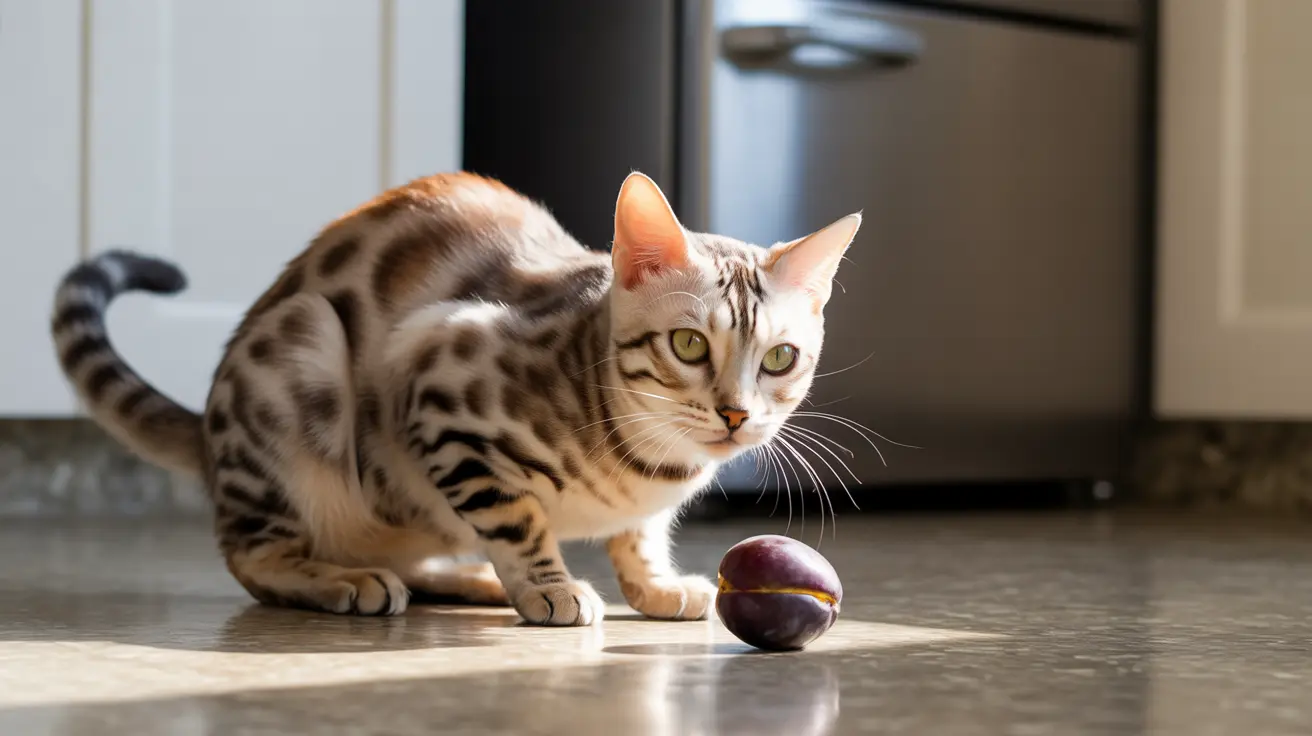As pet owners, we often wonder about sharing our favorite foods with our feline friends. When it comes to plums, however, caution is absolutely essential. While the flesh of plums isn't directly toxic to cats, several parts of this fruit can pose serious health risks to our feline companions.
In this comprehensive guide, we'll explore everything you need to know about cats and plums, including potential dangers, symptoms of toxicity, and what to do in case of accidental ingestion.
The Dangers of Plums for Cats
The primary concern with plums lies in their pits, stems, and leaves, which contain cyanogenic glycosides. These compounds can convert to cyanide in your cat's digestive system, potentially leading to severe poisoning. Even small exposures can be dangerous due to cats' small body size and sensitive digestive systems.
The Most Dangerous Parts of Plums
- Pits (stones)
- Stems
- Leaves
- Wilting fruit parts
- Plant material
Understanding Plum Toxicity in Cats
While the flesh of plums isn't technically toxic, it's still not recommended for cats. The high sugar content can cause digestive upset, and there's always a risk of accidental exposure to dangerous parts of the fruit.
Signs of Plum Poisoning in Cats
Watch for these warning signs if your cat has consumed any part of a plum:
- Dilated pupils
- Difficulty breathing
- Excessive panting
- Bright red gums
- Vomiting
- Lethargy or collapse
- Seizures in severe cases
What to Do If Your Cat Eats Plum
If you suspect your cat has eaten any part of a plum, particularly the pit or leaves, immediate action is crucial:
- Don't wait for symptoms to appear
- Contact your veterinarian immediately
- Call the ASPCA Animal Poison Control Center
- Keep any remaining pieces of the fruit for identification
- Monitor your cat closely while seeking help
Safe Fruit Alternatives for Cats
Instead of plums, consider these safer fruit options for occasional treats:
- Small pieces of seedless watermelon
- Peeled, seedless apple bits
- Banana slices
- Blueberries
- Cantaloupe chunks
Prevention and Safety Tips
To keep your cat safe from plum-related dangers:
- Store plums and other stone fruits securely
- Clean up fallen fruit in your yard
- Keep fruit trees off-limits to outdoor cats
- Dispose of pits and stems properly
- Educate family members about the risks
Frequently Asked Questions
Can cats safely eat the flesh of plums, or is any part of the plum toxic to them?
While the flesh itself isn't toxic, it's not recommended for cats. The pit, stems, and leaves contain dangerous compounds that can produce cyanide, and the flesh can cause digestive issues due to its sugar content.
What symptoms should I watch for if my cat accidentally eats a plum pit or stem?
Watch for dilated pupils, difficulty breathing, excessive panting, bright red gums, vomiting, lethargy, and potential collapse. These symptoms can develop rapidly and require immediate veterinary attention.
How dangerous is cyanide poisoning from plum pits and leaves in cats?
Cyanide poisoning from plum parts can be extremely dangerous and potentially fatal if left untreated. Even small amounts can cause serious problems due to cats' small size and sensitive systems.
What should I do if my cat ingests any part of a plum?
Contact your veterinarian or the ASPCA Animal Poison Control Center immediately. Don't wait for symptoms to appear, as early intervention is crucial for successful treatment.
Are there any safe fruit alternatives I can give my cat instead of plums?
Yes, several fruits are safe in moderation, including small amounts of seedless watermelon, peeled apple (no seeds), banana, and blueberries. Always remove seeds, pits, and skins, and offer only small quantities as occasional treats.
Remember, while some fruits can be safe treats, cats are obligate carnivores and don't require fruit in their diet. Always prioritize a balanced, species-appropriate diet for your feline friend.






